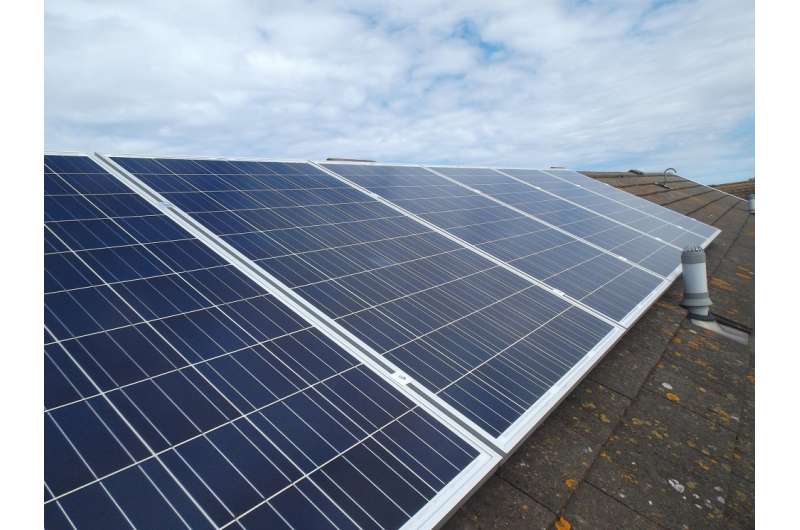Crowdfunding a renewable future

One issue with small-scale, home-based renewable energy systems is that initial setup costs can be high. This puts such installations out of reach for some sectors of society, even if they could benefit financial in the long run with lower household bills. One solution to this is crowdfunding. In 2015, an estimated EUR 4.2 billion was raised through crowdfunding platforms in Europe. And increasingly, it is being used to finance the growth of renewable energy.
Last year, Abundance, a U.K. company that specialises in peer-to-peer investments that create social and environmental benefits, raised £1.7 million (around €2 million) from 874 investors. This money was used to purchase and install more than 400 solar panels on social housing in Berwickshire, Scotland.
"The tenants in those homes get to use as much of the electricity produced as they can free of charge, which is helping some of the most vulnerable people in the U.K. save money on their energy bills," explains Karina Sidenius, marketing executive at Abundance. Any generated electricity not used by the tenants is sold to the grid at a fix price per kilowatt hour (kWh) under the U.K.'s Feed-in Tariff scheme. This revenue covers the running costs of the project and is used to repay the investors their initial capital plus a regular income.
The investors' income, however, is not based on the amount of electricity generated. The investment is a debenture that provides a fixed rate of return of 7.5 percent on the initial investment over the 20-year lifetime of the project.
Sidenius says that such crowdfunding projects "can improve the uptake of renewable energy by demonstrating the direct financial, social and environmental impacts of renewable energy to multiple groups in society, not just those that can afford to install it."
The CrowdFundRES project is looking at ways to accelerate and finance the growth of renewable energy in Europe using crowdfunding. Alex Raguet, a former investment banker and president of the French crowdfunding platformLumo, which is partner on the European project, thinks that investments that generate a social and environmental impact alongside a financial return, so-called impact investments, will be important for renewable energy in the future.
Lumo enables citizens to invest directly in renewable energy projects. One of their flagship projects is on a factory roof in Iteuil, France. The website generated €150,000 from 193 investors, which covered 8 percent of the cost of installing 13,000 m2 of photovoltaic panels. The remaining cost of the project was covered by a bank loan and the developer.
Once up and running, the €1.9 million installation is expected to generate 1.3 gigawatt hours of electricity per year – the average consumption of 481 French households. The revenue generated by selling this electricity to the grid will cover the bank loan, and pay back those that invested through the platform and the developer. Investor returns depend on the amount of electricity generated, but Lumo expects them to make 3.19 percent gross interest per year over the nine-year lifespan of the project. As well as producing electricity for the grid, renewable energy can help stand-alone installations reduce their carbon footprints.
Nowadays most people rely on mobile phones. But in rural areas, providing electricity to power mobile phone masts can be difficult. Many remote masts solve this problem with diesel generators, but these are heavy CO2 polluters.
Last year, the Spanish engineering company Enertika installed a combination of solar panels, batteries and new diesel generators at nine off-grid mobile phone stations. These upgrades mean that the masts are now powered by solar electricity or diesel generators that only have to run part of the time, rather than continuously. This is expected to cut the combined CO2 emissions of the installations by 67 percent, or 320,000 kg, per year. The upgrades were funded by an investment company, but following the project's success, investment was offered more widely via the Spanish crowdlending website Ecrowd!.
In total, €140,000 was borrowed from 127 investors and used for partial repayment of the original loan from the investment company. In return, ECrowd! pays back capital and interest, at an annual rate of 5 percent monthly over the four-year period of the loan. In the two years, the platform has "raised in excess of €1 million for 19 sustainable projects," says Marketing Director Stephan Samson.
"Finance is a key component of the uptake of renewable energy as well as energy efficiency schemes," he adds. "The collaborative financing model has a significant role to play, not only because it facilitates financing where it may otherwise be difficult to get, but also because it acts as a citizen led and democratic platform."
Provided by Youris.com


















